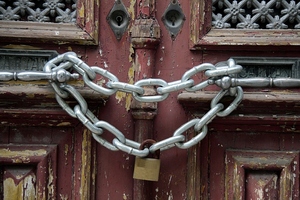A time to connect and a time to sell
You've got telemarketing, door-to-door sales, direct mail, and print advertising. Heck, you can even tie a banner behind an airplane and tow it around during the next college football home game. Because networking can take a long time to start paying off — months or even years — we should have it as a part of the mix of mechanisms we use to grow and prospect for our business.
That said, each has its time and place. The mistake most people make is thinking that the networking event is a good place to sell.
It really isn't.
I was doing a little casual research lately about sales. For most people, trying to sell at a networking event is a lot like a combination of telemarketing and door-to-door sales. By the way, these methods do work to bring customers to your business.
One of the articles I read quoted a study by the Direct Marketers Association. Apparently, using a targeted list, you could achieve a response rate of around 6 percent from cold-calling. Door-to-door statistics were a little harder to determine, but one person wrote that they expected to make a sale about one in 40 times that someone answered the door (less than 3 percent).
Here are a few problems with trying anything like this at a networking event:
- The numbers. Even if you could hope for getting a sale with one in 20 people, unless every event you attend is with a brand new group, you will have a hard time finding enough folks who haven't already heard your sales pitch.
- The focus. One of the reasons telemarketing achieves such a high rate or response is that they start out with a very targeted list of numbers to call. The average networking event is much more general, so unless you are selling umbrellas in the rain — your odds are closer to one in 40, one in 60, one in 100, or worse. As those numbers change, it gets even harder to target enough new people to fill your pipeline.
- The time. Even assuming there are enough new people and they are of a sufficiently focused demographic, you then run into the trouble of time. Suppose you need to talk with 20 new people before you can get a sale. Most events I attend have about a 20-30 minute window for open networking. Let's see. Doing the math (carry the one), that leaves between 60 and 90 seconds for each conversation. Better not let them talk too much, it will really cut into your pitch time.
- Their attention. When a telemarketer calls or a salesperson shows up at the door, they've got a few seconds of their prospect's undivided attention. How successful would they be if they had to compete with 10 other salespeople trying to get the attention of a prospect who is in the middle of a conversation at a party with fifteen of their friends? That pitch had better be fascinating or it won't even rate a second glance. Heck, it won't even rate a first one.
- Your reputation. No one, I repeat, no one, likes to be sold to. If you start pitching every single person you meet at the event, the word will quickly spread to avoid you at all costs. Debby Peters (aka the "Networking Guru"), refers to this as "commission breath," and there isn't a mint made that's strong enough to erase that stench. The equivalent in other sales techniques would be if a neighborhood had a telephone warning system where as soon as the salesman rang the first doorbell, a call went out telling the nearby houses not to answer the door.
Greg Peters, founder of The Reluctant Networker LLC, writes, speaks and coaches about good networking practice. For more tips that can help your connections count, go to www.thereluctantnetworker.com.


